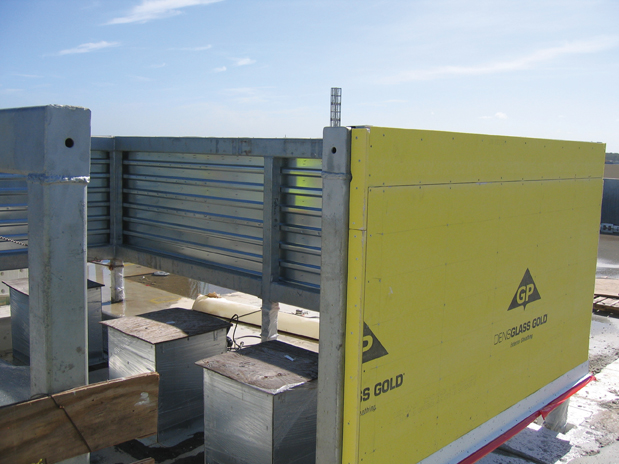Collman & Karsky does much of its work in coastal Florida, designing mission-critical facilities that are hurricane-hardened, meaning they’re resistant to high winds, flooding, and the impact of large airborne missile debris—flying chunks of wood and metal, even whole pieces of rooftop HVAC equipment. For one recent project, a renovation of the Sarasota Emergency Data Center, Collman & Karsky used Wellbilt’s Sure-Board Wall Panel, a modular, panelized wall system, to create a bunker able to withstand a Category 5 hurricane.
Karsky says the product was very clean and easy to install and required no cutting of floor slabs. “We were on an extremely tight time frame, and because it was modular, the walls could be set up quickly, allowing the other trades to come in and start working.” The modular system also cost “a little bit less” compared to concrete block or poured-in-place concrete, he says.
Hasan S. Arouri, PE, principal and senior structural project engineer for TLC Engineering for Architecture in Orlando, also attests to the benefits of the Wellbilt system: “The panels are tested and certified as hurricane-resistant, impact-resistant, and blast-resistant products, adequate and cost-effective to provide additional protection and strength for buildings located in high-velocity hurricane zones.”
TLC used them to harden the walls of the Florida Supreme Court Building in Tallahassee. Arouri says the technology provided a lightweight solution that strengthened the existing walls, enhancing their capacity to resist lateral hurricane wind pressures and providing blast-wall protection without the need for a lot of additional footings. The panels also allowed the building’s historic façade to be preserved.
Related Stories
| Sep 16, 2010
Gehry’s Santa Monica Place gets a wave of changes
Omniplan, in association with Jerde Partnership, created an updated design for Santa Monica Place, a shopping mall designed by Frank Gehry in 1980.
| Sep 16, 2010
Green recreation/wellness center targets physical, environmental health
The 151,000-sf recreation and wellness center at California State University’s Sacramento campus, called the WELL (for “wellness, education, leisure, lifestyle”), has a fitness center, café, indoor track, gymnasium, racquetball courts, educational and counseling space, the largest rock climbing wall in the CSU system.
| Sep 13, 2010
Community college police, parking structure targets LEED Platinum
The San Diego Community College District's $1.555 billion construction program continues with groundbreaking for a 6,000-sf police substation and an 828-space, four-story parking structure at San Diego Miramar College.
| Sep 13, 2010
Campus housing fosters community connection
A 600,000-sf complex on the University of Washington's Seattle campus will include four residence halls for 1,650 students and a 100-seat cafe, 8,000-sf grocery store, and conference center with 200-seat auditorium for both student and community use.
| Sep 13, 2010
Second Time Around
A Building Team preserves the historic facade of a Broadway theater en route to creating the first green playhouse on the Great White Way.
| Sep 13, 2010
Palos Community Hospital plans upgrades, expansion
A laboratory, pharmacy, critical care unit, perioperative services, and 192 new patient beds are part of Palos (Ill.) Community Hospital's 617,500-sf expansion and renovation.
| Sep 13, 2010
China's largest single-phase hospital planned for Shanghai
RTKL's Los Angles office is designing the Shanghai Changzheng New Pudong Hospital, which will be the largest new hospital built in China in a single phase.
| Sep 13, 2010
Richmond living/learning complex targets LEED Silver
The 162,000-sf living/learning complex includes a residence hall with 122 units for 459 students with a study center on the ground level and communal and study spaces on each of the residential levels. The project is targeting LEED Silver.















